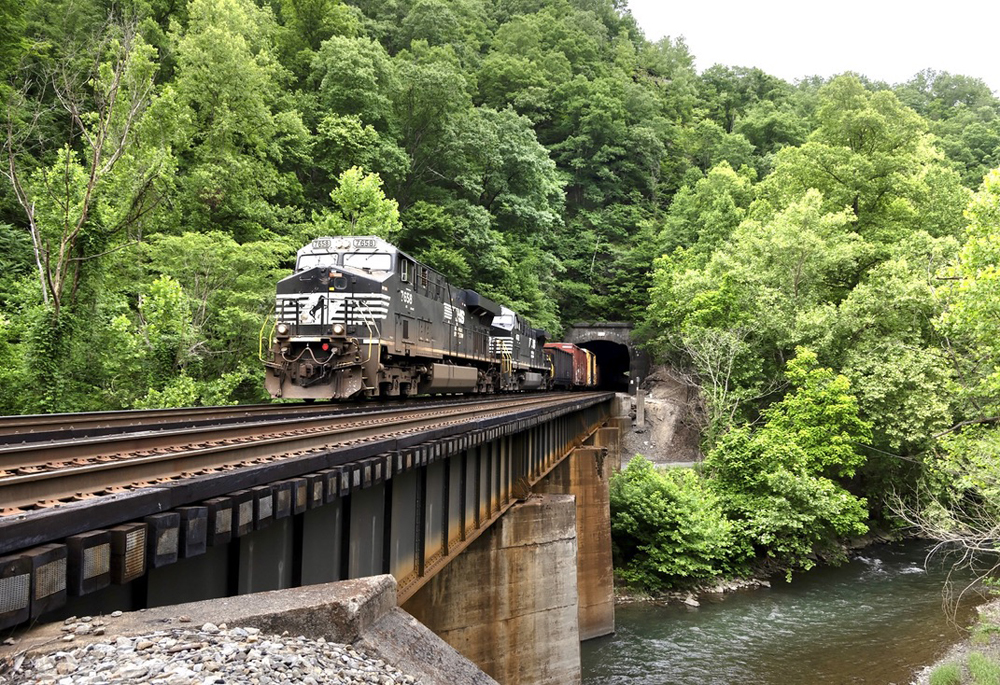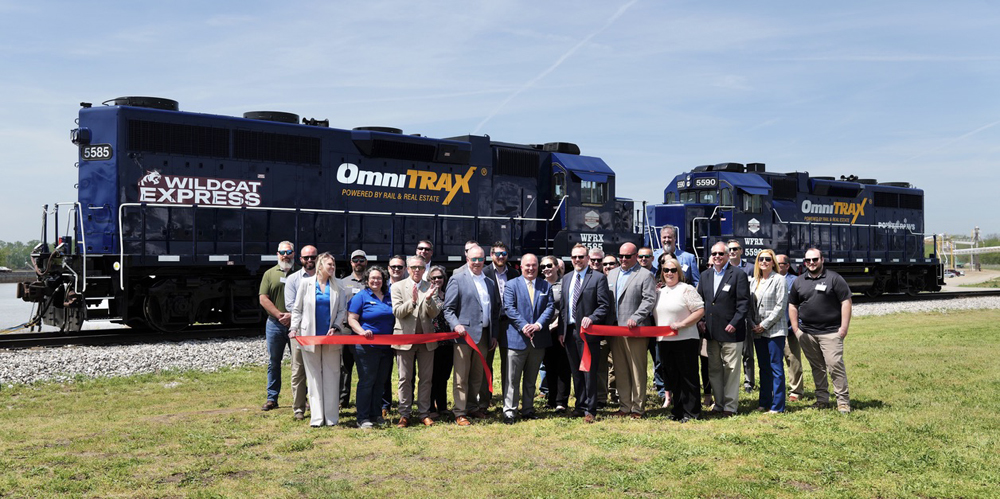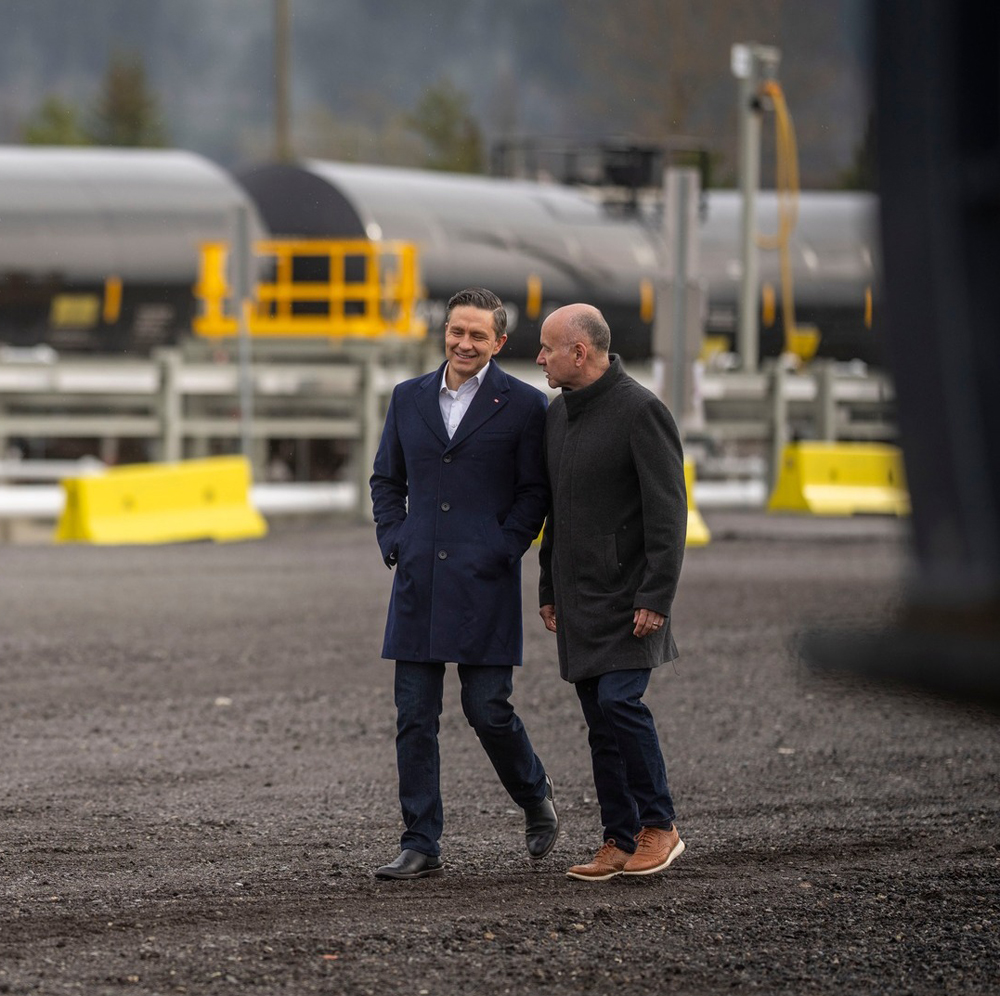“Looking to the balance of this year and next, we are cautiously optimistic,” CEO Jean-Jacques Ruest said on the railway’s earnings call. “We have a diverse pipeline of organic growth and line of sight on some market wins ahead of us.”
CN’s operating income rose 11%, to $1.7 billion, as revenue grew 9%, to $3.95 billion. Earnings per share, adjusted for the impact of one-time items, rose 15% to $1.73, which topped the estimates of analysts on Bay Street and Wall Street. The revenue, operating income, and earnings per share figures were all records.
CN’s operating ratio was 57.5% for the quarter, an improvement of 0.7 points.
Volume was up 2%, whether measured by carloads revenue ton-miles, the favorite metric of the Canadian railroads. The only business segment to show a volume decline was forest products, which was down 8% amid mill closures and production cutbacks in British Columbia. Every other segment grew, led by 12% growth in petroleum and chemicals traffic, a 5% gain in coal volume, and a 4% surge in automotive shipments.
CN’s intermodal revenue surged 15% thanks in part to its acquisition of TransX, a Canadian trucking company. TransX has expanded CN’s intermodal capabilities, Ruest says, which helped it land a new domestic intermodal contract with Canadian retailer Hudson’s Bay Co.
The railroad also renewed international intermodal contracts with Evergreen and Hapag-Lloyd. Keith Reardon, senior vice president of consumer product supply chain, says CN has new deals with other existing international customers, as well, but could not yet name the steamship lines.
CN won new business from General Motors, which will begin using CN’s new auto terminal in Vancouver, British Columbia, in October as well as a new auto ramp set to open in Minneapolis in the fall of 2020, Reardon says.
On the carload side, CN expects to see continued growth in coal and propane traffic exported through the Port of Prince Rupert, British Columbia, says James Cairns, senior vice president of rail centric supply chain. A new AltaGas propane export terminal at Prince Rupert opened in May, and the new Coalspur mine in Alberta is ramping up production.
CN also is expecting crude volumes to improve, with the pace of growth tied to actions by the government of Alberta. The prior provincial government imposed production curtailments and signed oil contracts with CN and CP, but the new government is looking to ease the curtailments and transfer its crude by rail contracts to producers.
CN’s key operating metrics improved for the quarter even as gross ton-miles rose 3% – and 5% to record levels in Western Canada. Car miles per day was up 9%, terminal dwell declined 11%, and average train speed rose 4% versus last year’s second quarter.
CN had locomotives and crews on hand to move more frac sand and crude oil volumes than actually materialized during the quarter. So the railroad furloughed 500 train and engine crew members during the quarter, a figure that now stands at 200, due to rising crude oil shipments.
CN is aiming to reduce its management ranks by 5% by the end of the year, which is on top of a 13% decline in the non-union workforce since October.
CN’s capacity expansion projects, primarily new sidings and double track in Western Canada and on the Winnipeg-Chicago corridor, are on schedule for completion by the beginning of the fourth quarter, Chief Operating Officer Rob Reilly says.
Reilly, who joined CN on July 1 after spending 30 years at Santa Fe and BNSF Railway, says he’s impressed with CN’s operating team.
“It’s very obvious that this is a seasoned group of scheduled railroaders, and they do a lot of things, really, really well and I’ve been very impressed in my few weeks here,” Reilly says.
CN’s key safety measures improved during the quarter. The personal injury rate fell slightly, while the train accident rate improved 43%.















Now thats something to be impressed with…..a record quarter based on traffic growth.